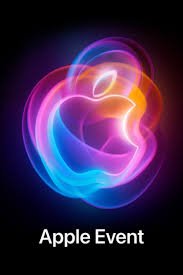
Apple’s product launch events have become highly anticipated global spectacles. Known for their polished presentations and cutting-edge announcements, Apple Events are where the company showcases its latest innovations, including iPhones, iPads, MacBooks, Apple Watches, and software updates. These events provide insight into the company’s direction and future technologies.
In this post, we will dive into what Apple Events are, why they are significant, highlight some of the key announcements from past events, and take a look at how Apple’s events have evolved over the years.
What is an Apple Event?
An Apple Event is a live (or prerecorded) presentation where the company reveals new hardware, software updates, and services. These events are often broadcast to the public and are meticulously designed to create excitement around the brand’s new releases.
Historically, these events were held live in venues like Apple Park or the Moscone Center in San Francisco, featuring prominent speakers like Apple’s CEO Tim Cook and Senior Vice Presidents such as Craig Federighi and Phil Schiller. Recently, due to the global pandemic, Apple shifted to virtual events, maintaining high production quality with polished visuals and seamless transitions.
When Do Apple Events Occur?
Apple generally holds multiple events each year, typically at the following times:
- Spring (March/April): Focus on iPads, Apple Watches, and services like Apple TV+ and Fitness+.
- Worldwide Developers Conference (WWDC) in June: Primarily focused on software, including iOS, macOS, iPadOS, watchOS, and tvOS.
- Fall (September/October): Primarily for new iPhone models, Apple Watches, and occasionally Mac updates.
- Special Events: Occasionally, Apple will hold unscheduled events for major new product lines or services, such as the introduction of Apple Silicon in 2020.
Why are Apple Events Significant?
Apple Events are not just about introducing new gadgets; they set the tone for the company’s strategic direction. Here’s why they are so important:
- Innovative Product Launches: Apple uses these events to unveil its most anticipated products, such as the latest iPhones, iPads, and Macs. They introduce breakthrough technologies in hardware (like the A-series and M-series chips) and software.
- Trend-Setting Technology: Apple frequently sets trends within the tech industry. Innovations such as Face ID, the M1 chip, and Apple Silicon all made their debut during Apple Events. Competitors often follow suit after Apple defines the next big technological trends.
- Stock Market Influence: Apple Events can have a significant impact on the stock market, with the company’s stock prices often fluctuating before, during, or after the announcements.
- Customer and Developer Ecosystem: For developers and Apple fans alike, these events highlight new features in operating systems (like iOS, macOS, etc.), revealing crucial information that influences future app development and user experiences.
- Hype and Marketing: Apple is a master of building excitement around its brand. These events are anticipated worldwide, drawing millions of views online. The polished production, charismatic presenters, and well-timed reveals help Apple maintain its reputation as a leading innovator.
Recent Highlights from Apple Events
Here are some key highlights from recent Apple events:
1. Apple Event – September 2023: iPhone 15 and Apple Watch Series 9
The September 2023 Apple Event, often referred to as the “Wonderlust” event, introduced the following key products:
- iPhone 15 and iPhone 15 Pro: Apple revealed the iPhone 15 lineup, featuring a more advanced A17 Bionic chip (for Pro models), enhanced camera capabilities, and a USB-C port—a significant shift driven by the EU’s mandate for standardized chargers.
- Apple Watch Series 9: Apple focused on the S9 chip for enhanced performance and Double Tap gesture, a new way to interact with the watch without touching the screen. The Ultra 2 model was also announced with additional features for extreme environments.
- iOS 17: Introduced at WWDC earlier, iOS 17 was highlighted with new features like Contact Posters, Live Voicemail, and enhanced iMessage functionality.
2. WWDC 2023 (June): Vision Pro Headset and New OS Features
WWDC 2023 was one of the most anticipated developer events in years, largely because of Apple’s introduction of the Apple Vision Pro, its mixed-reality headset. Key announcements included:
- Apple Vision Pro: Apple entered the mixed-reality space with this advanced headset, combining augmented reality (AR) and virtual reality (VR). The Vision Pro has a spatial computing interface and is designed to blend digital content with the real world.
- iOS 17: Apple introduced new features for iOS 17, including a Journal app, updates to Messages, NameDrop, and Live Voicemail.
- macOS Sonoma: macOS received updates with widgets on the desktop, enhanced video conferencing features, and improvements to Safari.
- M2 Ultra: Apple also unveiled the M2 Ultra chip, continuing the company’s evolution toward more powerful custom silicon for its Mac lineup.
3. March 2022 Event: iPhone SE and M1 Ultra
Apple’s March 2022 event, branded “Peek Performance,” included the following notable announcements:
- iPhone SE (2022): A budget-friendly iPhone with a familiar design but updated internals, including the A15 Bionic chip and 5G capabilities.
- M1 Ultra: Apple introduced the M1 Ultra chip, the final entry in the M1 family, designed to offer unmatched performance in creative and professional tasks.
- Mac Studio: A new category of desktop for professionals featuring the M1 Ultra chip.
Evolution of Apple Events
1. Live Events (Pre-2020)
Before the global pandemic, Apple Events were held live, with large crowds at venues like the Steve Jobs Theater. These events were known for their dramatic reveals, live demos, and high-profile guest appearances. The audience consisted of media, developers, and select Apple fans.
2. Virtual Events (2020 Onward)
In 2020, Apple transitioned to virtual events due to the COVID-19 pandemic. These online-only presentations have become the norm, allowing Apple to craft highly-produced, cinematic experiences. The pre-recorded format enables more control over the presentation’s pace, with seamless transitions between product demos, interviews, and detailed technical explanations.
These virtual events have been praised for their sleek editing and ability to provide more in-depth looks at products. As of 2023, Apple continues to follow this model, with occasional hybrid elements, where small in-person audiences are invited to watch live streams at Apple Park.
Future of Apple Events
Apple Events are likely to continue evolving, with technology becoming even more immersive. Apple’s focus on AR/VR with the Vision Pro headset suggests that future events might integrate more augmented reality experiences, allowing users to interact with product demos in their own environments.
Additionally, with ongoing innovations in health technology, AI, and custom silicon, future events are sure to be filled with groundbreaking advancements that will shape the next decade of consumer tech.
Final Thoughts
Apple Events are much more than product announcements; they are cultural milestones that define the future of technology. From the early days of the iPod to the latest Vision Pro headset, these events have captivated millions and helped Apple maintain its position as one of the most innovative companies in the world.
With each event, Apple demonstrates its commitment to pushing boundaries, whether through hardware, software, or entirely new product categories. Whether you’re a developer, tech enthusiast, or casual consumer, Apple Events are essential viewing for understanding where the future of tech is headed.
Read more at the Cageoflife blog




